 It’s a propaganda film, but it works — not just as propaganda, but as entertainment. Even after almost three-quarters of a century. Even knowing what most of the people in its theater audiences did not learn until later: that they, and the filmmaker, were working for one of the most evil regimes in the long history of human depravity. Even knowing that, we enjoyed the movie.
It’s a propaganda film, but it works — not just as propaganda, but as entertainment. Even after almost three-quarters of a century. Even knowing what most of the people in its theater audiences did not learn until later: that they, and the filmmaker, were working for one of the most evil regimes in the long history of human depravity. Even knowing that, we enjoyed the movie.
Stukas tells the story of a Stuka squadron in the early days of World War II. They tend to be on the winning side, whether they’re fighting the Poles, the Belgians, or the French, but that doesn’t mean they have it all their way. They suffer losses; they have adventures. One poor bastard even becomes a psychological casualty, although he snaps out of it by the credits.
Along with the combat story, there are many human interest sub-plots and interesting period pilot behavior and language. The subtitles can’t be turned off, apparently, but at least they’re generally well and idiomatically translated.
It’s an unusual insight, from 1941, into the German mind as the Nazi empire advanced, seemingly unstoppably, on all fronts. At least until they decided to one-up Napoleon and invade Russia.
War films that have been made postwar have been made in the knowledge that the invincible German war machine was far from invincible, and in less than four years from their pre-Barbarossa high point, they’d be driven back, crushed, defeated in detail, occupied, and partitioned; over half the prewar land mass of the German Reich would be forfeit for decades, if not forever, in the case of a dozen or more provinces that became part of foreign nations and were ethnically cleansed of Germans in the postwar years.
All postwar movies are freighted with the knowledge of defeat, and can’t reproduce the (somewhat creepy, in retrospect) enthusiasm in victory that suffuses this movie.
Acting and Production
The actors are unknown to us, but they are apparently a who’s who of German cinema at the time, and the production spared no expense; it’s technically brilliant. For example, in the Dark Ages before the Gaudy Age of CGI, combat aircraft were usually shown by using rear projection.
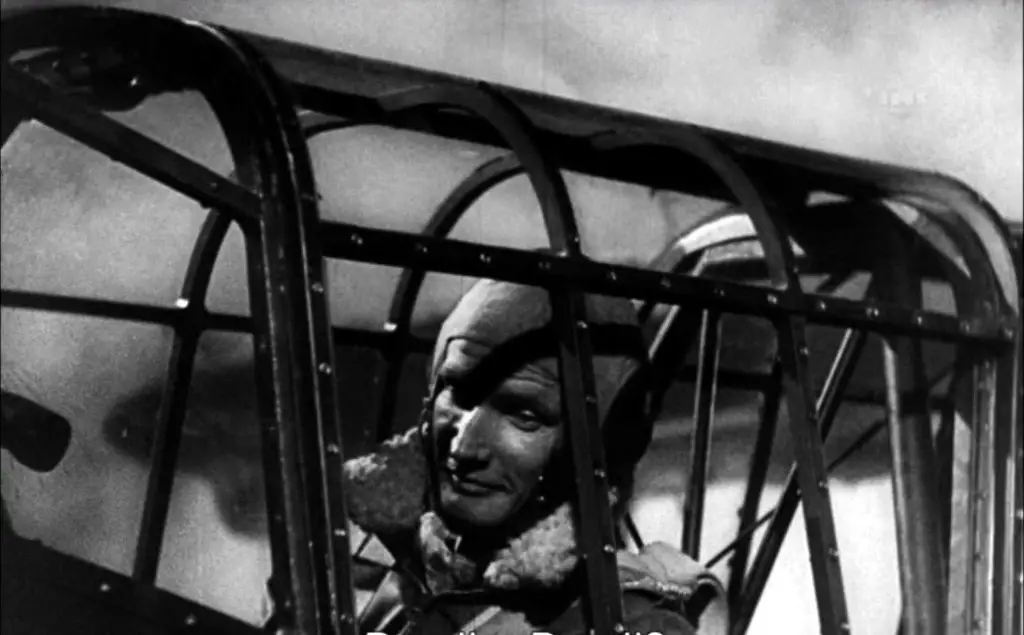 The crew of interest was in a mockup in the foreground, and other aircraft or scenery were projected in the background. It can be well done, but in most American films it’s really rather crude by today’s standards. In most films, the cockpit mockups often don’t resemble the actual aircraft much, and the motion of the foreground stuff versus the rear projection is unnatural and just plain weird. That is not the case here — this is, in effect, a 1940 master class in how to do rear projection effects right.
The crew of interest was in a mockup in the foreground, and other aircraft or scenery were projected in the background. It can be well done, but in most American films it’s really rather crude by today’s standards. In most films, the cockpit mockups often don’t resemble the actual aircraft much, and the motion of the foreground stuff versus the rear projection is unnatural and just plain weird. That is not the case here — this is, in effect, a 1940 master class in how to do rear projection effects right.
Director Karl Ritter was a World War I combat pilot who maintained a Reserve commission in the Luftwaffe. and was acquainted with Göring and Udet.
The DVD was produced by American Historical Films, an outfit that has reissued so much Nazi propaganda we can’t help but wonder if they’re really in it for the art… but regardless of their motivations, they’ve done a good job on remastering an old print and including some informative extras on the disc.
Accuracy and Weapons
Naturally, a nation that had a Propaganda Minister made the Luftwaffe available to the director who was a Luftwaffe officer — it didn’t hurt that Karl Ritter was an old-time Nazi Party member himself.
The key weapon in the movie is, of course, the Ju87B Stuka dive-bomber, and these are represented with a great deal of accuracy. As noted above, the flying scenes are generally much better than the usual run of 1940s war movies. Where the effects masters use models, realism suffers. One fanciful “dogfight” has Stukas emerging victorious from combat with Spitfires during the Battle of France, which is not only historically wrong (the only modern fighters deployed to France were Hurricanes), but also aeronautically implausible. It’s one of three places where the propagandistic nature of the film detracts from its entertainment objective.
The next propaganda coup is the degree to which the pilots are Nazi-saluting one another. Perhaps Ritter is right and we are wrong, but we understood the Nazi salute (stiff arm and “Heil Hitler”) was only imposed on the Luftwaffe after the July 20, 1944 assassination attempt.
One advantage to a black-and-white film, of course, is that they could and did intersperse combat camera footage. It’s quite hard to be sure what formation and dive-attack scenes were staged (with real aircraft) for the film, and which were combat camera footage. As long as they stay away from the models the images are logical and believable.
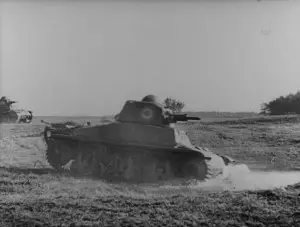
French tanks about to be bombed. Rare in a wartime film, they’re really French tanks. (all images in this post do embiggen),
One of the impressive “gets” of the production is the French uniforms, vehicles and equipment. These are generally quite correct.
The sounds of weapons seem to be generic studio SFX, but the sounds of the Stukas, especially the ropey idle of the Mercedes-Benz DB601 engine, appear to have been captured perfectly for the movie. The score is generally good — unobtrusive, but emotion-stirring, as Ritter no doubt wanted.
Finally, the close of the movie is the third and most implausible propaganda insert in the film. Having beaten Poland, Belgium and France, our intrepid dive-bombers are off to England with the rising sun behind them… as they all sing “The Stuka Song” over the radio. That’s a very hard sell to anyone who’s ever been a combat warrior in any military. An ironic, or even sarcastic rendition, maybe, but seriously? Poof goes suspension of disbelief. The ending is by far the worst of the film’s transgressions.
The bottom line
Stukas is fun, although it’s creepy seeing such a humanization of a one-time national enemy. If you can make it through an hour and a half or so of black and white with subtitles (and unfortunately, it does not seem possible to turn off the subtitles), you will find it interesting. For the Luftwaffe buff it’s a treasure trove of period uniforms, aircraft, and ground equipment .
For more information
These sites relate to this particular film.
Amazon.com DVD page:
http://www.amazon.com/Stukas-Restored-Luftwaffe-WW2-Epic/dp/B00CXZQZF4/
IMDB page:
http://www.imdb.com/title/tt0140578/
IMFDB page (none):
Rotten Tomatoes review page :(none)
Wikipedia page:

Kevin was a former Special Forces weapons man (MOS 18B, before the 18 series, 11B with Skill Qualification Indicator of S). His focus was on weapons: their history, effects and employment. He started WeaponsMan.com in 2011 and operated it until he passed away in 2017. His work is being preserved here at the request of his family.

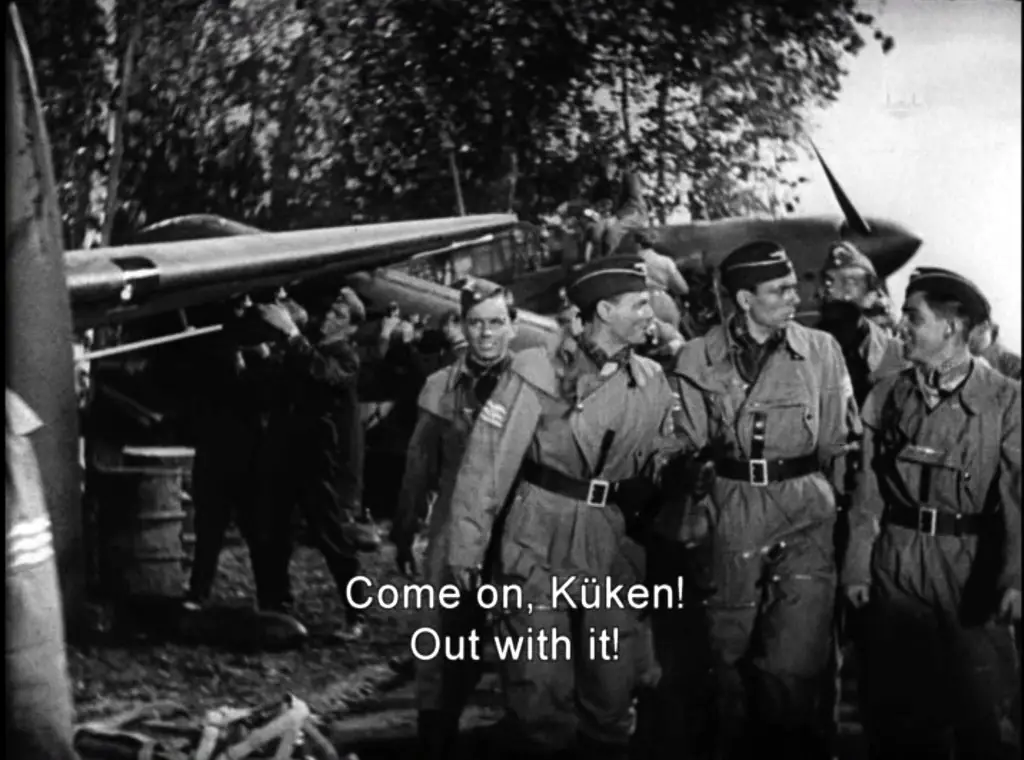
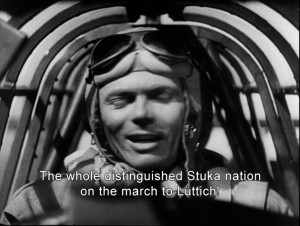
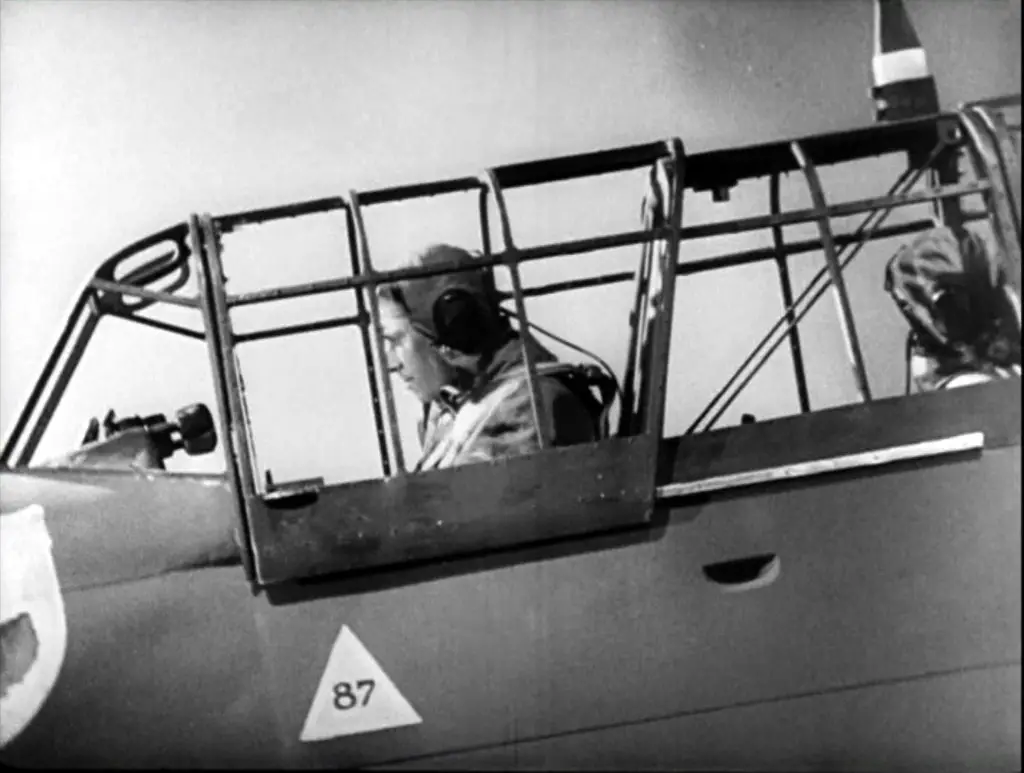
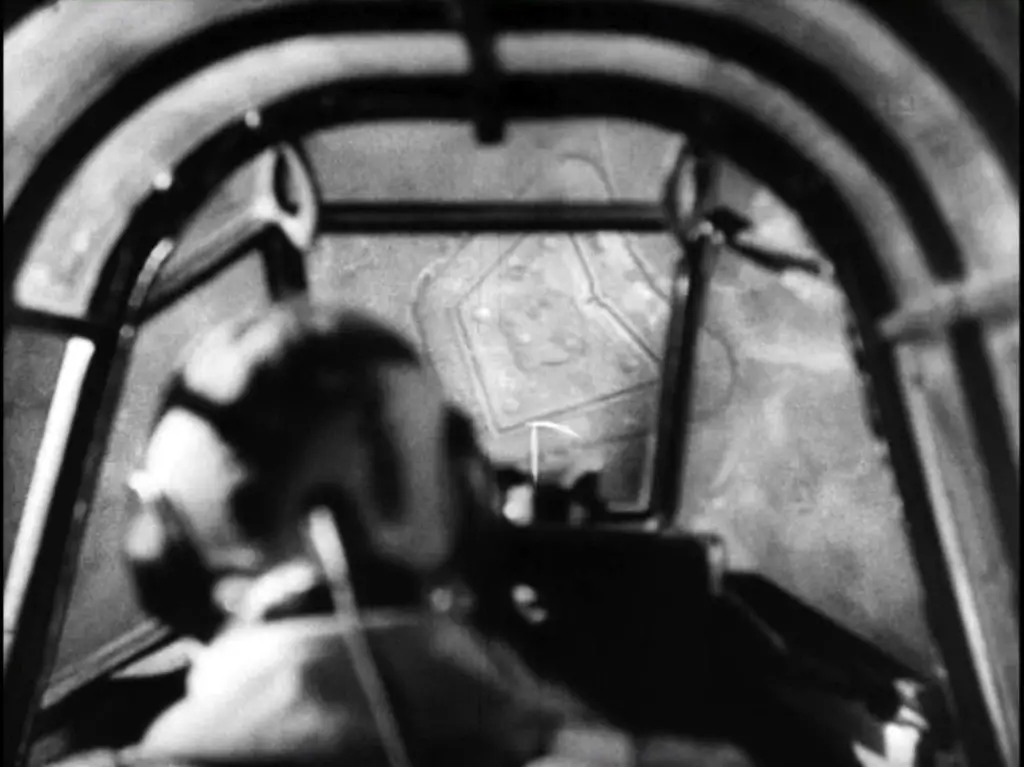
3 thoughts on “Saturday Matinee 2015 18: Stukas (German, 1941)”
Did Stukas really “whistle” during a dive?
Most anything whistles to some degree, in that the rush of air over the plane makes a higher pitched sound in a dive, but the Germans amplified this effect for its psychological impact.
Starting in, IIRC, the 1940 invasion of the Low Countries, the Stuka Ju87 B-1 variant was fitted with a gadget called a Jericho Trumpet, and it was a siren much like a US police siren (a screamer as opposed to the Euro warbling type), driven by a small turbine impeller and mounted to the wing. Later, they discovered that they could create a hellish noise by putting a whistle on the bomb that was active at higher speeds than the Stuka cruised. This let them take the Jericho Trumpets off (there was a drag penalty to having these things hanging there).
The common Hollywood “diving plane” sound effect is actually an ancient recording of a Jericho Trumpet. That’s why movie diving planes don’t sound quite like the planes you might see maneuvering aerobatically at an airshow! Apart from aerobatic performers, most pilots never make a Stuka’s degree of dive (and actually, most planes are not certified for this, and would gain speed much too quickly to a number engineers call “never exceed velocity.”)